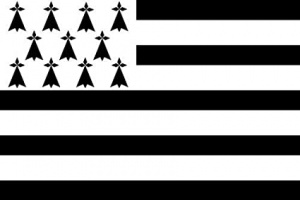Language/Breton/Grammar/Gender
Hi Breton learners! 😊
In this lesson, we will learn about the gender of nouns in Breton. We will look at the different genders and how to identify them. We will also look at some examples of nouns in each gender. Let's get started!
Genders
In Breton, there are three genders: masculine, feminine, and neuter. Each noun is assigned one of these genders, and it is important to know the gender of a noun in order to use it correctly in a sentence.
Masculine
The masculine gender is used for nouns that refer to male people or animals, as well as some objects. Here are some examples of masculine nouns:
| Breton | Pronunciation | English Translation |
|---|---|---|
| paotr | /paʊtr/ | boy |
| kazh | /kaʒ/ | cat |
| kouer | /kuɛr/ | chair |
Feminine
The feminine gender is used for nouns that refer to female people or animals, as well as some objects. Here are some examples of feminine nouns:
| Breton | Pronunciation | English Translation |
|---|---|---|
| plac'h | /plaʃ/ | girl |
| loen | /lɔɛn/ | lion |
| gwele | /gwɛlə/ | bed |
Neuter
The neuter gender is used for nouns that refer to things that are neither male nor female, such as plants, abstract concepts, and some objects. Here are some examples of neuter nouns:
| Breton | Pronunciation | English Translation |
|---|---|---|
| blouzenn | /bluzɛn/ | flower |
| karantez | /karɑ̃tɛz/ | love |
| teul | /tɛwl/ | table |
Identifying Genders
It can be difficult to identify the gender of a noun, especially if it is a new word. However, there are some clues that can help you determine the gender of a noun.
- Masculine nouns often end in -er, -our, or -añ.
- Feminine nouns often end in -enn, -ezh, or -i.
- Neuter nouns often end in -ad, -ed, or -où.
It is also helpful to look at the context in which the noun is used. If the noun is referring to a person, then it is likely to be either masculine or feminine. If the noun is referring to an object, then it is likely to be either masculine, feminine, or neuter.
Quiz
Test your knowledge of Breton gender with the following quiz questions:
- What are the three genders in Breton?
- How can you identify the gender of a noun?
- What are some examples of masculine nouns?
- What are some examples of feminine nouns?
- What are some examples of neuter nouns?
Answers
- The three genders in Breton are masculine, feminine, and neuter.
- You can identify the gender of a noun by looking at the ending of the word, as well as the context in which it is used.
- Some examples of masculine nouns are paotr (boy), kazh (cat), and kouer (chair).
- Some examples of feminine nouns are plac'h (girl), loen (lion), and gwele (bed).
- Some examples of neuter nouns are blouzenn (flower), karantez (love), and teul (table).
➡ If you have any questions, please ask them in the comments section below.
➡ Feel free to edit this wiki page if you think it can be improved. 😎

